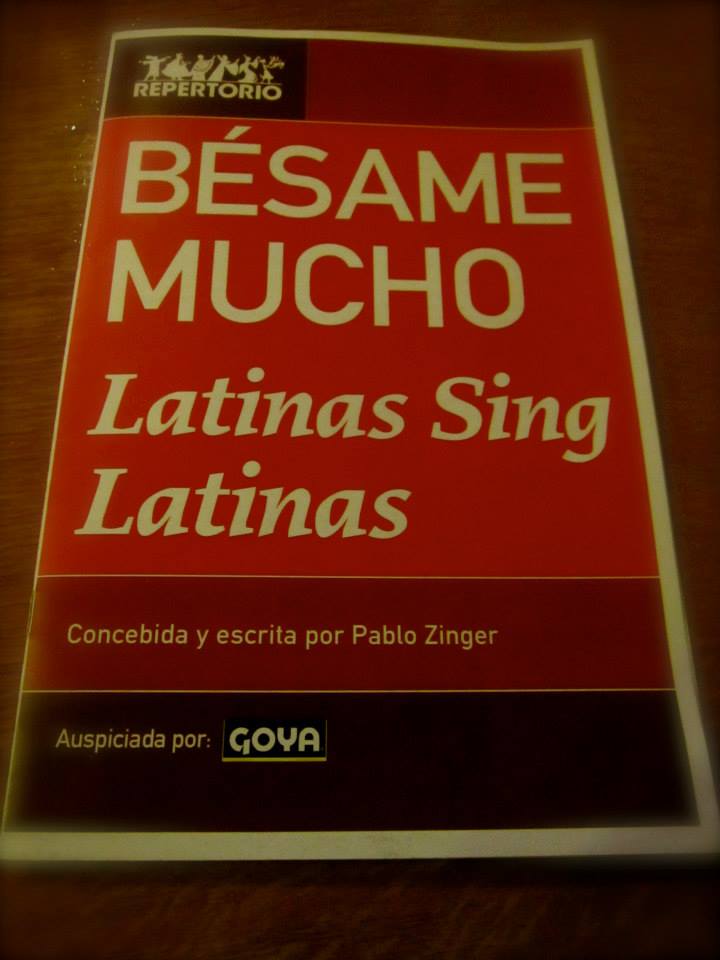BÉSAME MUCHO, which bears the subtitle “Latinas Sing Latinas,” and the further tagline, “Una antología musical de las más grandes compositoras latinoamericanas,” is substantial, even educational, in content, yet light and emotionally buoyant. Structurally it resembles Voces del tango, which I saw late last year from the same writer and conceiver, Pablo Zinger: four singers with Zinger as narrator and pianist. But while VOCES DEL TANGO captured the tango as art song, BÉSAME MUCHO evokes the mid-century nightspots of New York, Miami, Cuba, and Southern California with which English speaking North America associated the music of South, Central and Carribean America.
At Repertorio Español, the director José Zayas, the designer Robert Weber Federico, and Zinger himself, re-create the glitter, faux starlight, shimmering gowns, and romantic lighting that embodied the promise, and sometimes the fact, of affluence in American life. Songs born of the particularities of their own cultures (Cuba, México, Perú, Argentina and Chile are represented) had to the North American ear a velvetine luxury difficult to find in the harder-edged, less consistent phonetics of English. Seeing BÉSAME MUCHO was, for this listener, oddly nostalgic, a recollection of snippets heard after bedtime on the TV, in the days before cable, when the black-and-white movies set in nightclubs came on, or the late night hosts welcomed this or that singer from Miami. This is the ironic participation of one culture in the memory of another (or others), as happens to me when I dance tango, or listen to the plaintive tones of fado or flamenco. Maybe this can be attributed, in part, to the show’s focus on the contributions of women, so often the bearers of memory, whether as composers, lyricists, or singers. “Bésame mucho” itself – which Zinger describes as the most famous of all latin songs – was written by a woman, the Mexican Consuelo Velázquez, who lived from 1916 until 2005.
All told, some 33 numbers are presented, ranging from bolero to tango to folk, by four singers of great skill and presence. Two, Virginia Herrara-Crilly and Brenda Feliciano, are palpably operatic on first listen, but by show’s end wear the nightclub aesthetic like the sequined gowns they are dressed in. They bring an aura of life experience to the stage that balances nicely with the two younger singers, Gizelxanath and Shadia Fairuz. Fairuz has a vervy showtune sensibility that is accessible and a tad slouchy; she’s great at picking up vibes from the audience and sending them back to us like boomerangs. To see and hear Gizelxanath is quite simply a trip. She has the characterological gifts to be expected from her training in zarzuela: when she sings she is always someone. But she is also herself divided, a skilled producer of trills and chromatic flourishes, but in addition a little wild; there is a look of challenge in her eyes, and the tossled disorder of her hair, a Dionysian abandon that almost dares the song – and the listener – to remain civilized. BÉSAME MUCHO invites the respect due to the past that nostalgia implies, and to the foregrounding of women in the creation of latin song. Gizelxanath injects a touch of the avant-garde into the experience, reminding us that the future, as well as the present, are on the same continuum.
Click here for information on Repertorio Español, where BÉSAME MUCHO is next scheduled on Oct. 4, 2015.
